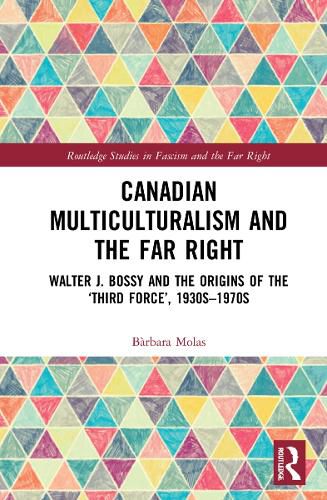Readings Newsletter
Become a Readings Member to make your shopping experience even easier.
Sign in or sign up for free!
You’re not far away from qualifying for FREE standard shipping within Australia
You’ve qualified for FREE standard shipping within Australia
The cart is loading…






Canadian Multiculturalism and the Far Right examines a neglected aspect of the history of 20th century Canadian multiculturalism and the far right to illuminate the ideological foundations of the concept of 'third force'.
Focusing on the particular thought of ultra-conservative Ukrainian Canadian Walter J. Bossy during his time in Montreal (1931-1970s), this book demonstrates that the idea that Canada was composed of three equally important groups emerged from a context defined by reactionary ideas on ethnic diversity and integration. Two broad questions shape this research: first, what the meaning originally attached to the idea of a 'third force' was, and what the intentions behind the conceptualization of a trichotomic Canada were; and second, whether Bossy's understanding of the 'third force' precedes, or is related in any way to, postwar debates on liberal multiculturalism at the core of which was the existence of a 'third force'.
This book will be of interest to students and researchers of multiculturalism, radical-right ideology and the far right, and Canadian history and politics.
$9.00 standard shipping within Australia
FREE standard shipping within Australia for orders over $100.00
Express & International shipping calculated at checkout
Canadian Multiculturalism and the Far Right examines a neglected aspect of the history of 20th century Canadian multiculturalism and the far right to illuminate the ideological foundations of the concept of 'third force'.
Focusing on the particular thought of ultra-conservative Ukrainian Canadian Walter J. Bossy during his time in Montreal (1931-1970s), this book demonstrates that the idea that Canada was composed of three equally important groups emerged from a context defined by reactionary ideas on ethnic diversity and integration. Two broad questions shape this research: first, what the meaning originally attached to the idea of a 'third force' was, and what the intentions behind the conceptualization of a trichotomic Canada were; and second, whether Bossy's understanding of the 'third force' precedes, or is related in any way to, postwar debates on liberal multiculturalism at the core of which was the existence of a 'third force'.
This book will be of interest to students and researchers of multiculturalism, radical-right ideology and the far right, and Canadian history and politics.